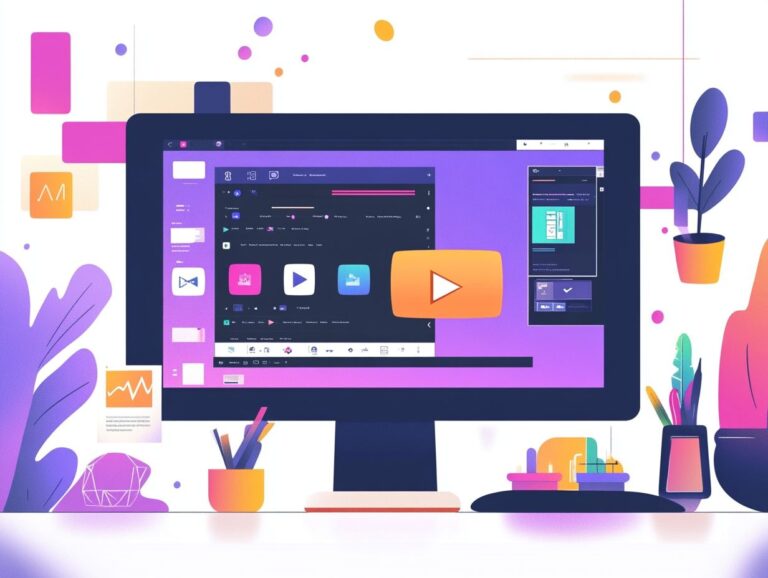How to Prevent Students From Using AI for Their Assignments?
This document outlines ten negative impacts of artificial intelligence (AI) on learning, along with effective strategies that educators can employ to mitigate these effects. As the use of AI in education grows, it offers personalized learning experiences and enhances educational quality. However, its integration also presents several disadvantages for students, such as the risk of academic dishonesty, diminished critical thinking skills, and a lack of conceptual understanding.
AI can create challenges for students in both classroom and home learning environments, yet there are effective strategies that educators can implement to address these issues. The potential risks associated with AI in education, including cheating, excessive dependence on technology, and unemployment, are significant, and if not addressed, they can directly affect students’ academic, social, and professional lives. Below is a list of ten negative impacts of AI on learning, followed by effective methods for educators to counteract these challenges.
Contents
- Negative Impacts of AI on Learning and Education
- How Educators Can Combat the Negative Effects of AI on Learning and Education
- Conclusion
- Key Takeaways:
- The Negative Impact of AI on Students’ Learning
- Ways to Prevent Students from Using AI for Assignments
- Teaching Students Ethical Use of AI
- Frequently Asked Questions
- How can I prevent students from using AI for their assignments?
- Why should I prevent students from using AI for their assignments?
- What steps can I take to detect if a student has used AI in their assignment?
- Is it ethical to prevent students from using AI for their assignments?
- How can I educate students on the consequences of using AI for their assignments?
- What can I do if a student has used AI in their assignment?
Negative Impacts of AI on Learning and Education

- Academic Dishonesty Cheating is a risk inherent to any new technology, particularly in education. AI tools can easily generate written content and solve mathematical problems for students, encouraging them to submit these solutions as their own. This not only affects the individual student but also undermines the integrity of the educational system.
- Dependence on Technology The convenience of AI tools for transcribing and summarizing information may lead students to become overly reliant on technology for answers. This reliance can stunt their intellectual growth and create challenges when technology is unavailable.
- Impaired Critical Thinking Skills Critical thinking is a foundational skill that all students must develop throughout their educational journey. Overusing AI tools can impair this ability, leading students to depend on these tools for answers instead of engaging in critical thought. This reliance can have long-term consequences for their decision-making capabilities.
- Lack of Conceptual Understanding Students may use AI tools to obtain answers without fully understanding the underlying concepts. For instance, they might rely on AI to solve math problems without grasping the relevant concepts, hindering their future academic pursuits.
- Lack of Practical Experience AI tools can provide students with a distorted view of reality. For example, an AI may offer a description of a scientific experiment rather than allowing students to conduct the experiment themselves. Practical experience is essential for students to develop a comprehensive understanding of their subjects.
- Narrow Scope of Knowledge AI tools can limit students’ knowledge base. If students rely solely on AI to gather information on a particular subject, they may overlook significant insights that are not included in the AI’s database.
- Job Losses The integration of AI in education could impact the job market for educators. If AI tools are capable of accurately assessing student performance, the need for teachers to fulfill this role may diminish.
- Unemployment for Educators AI tools can contribute to unemployment among educators. For instance, if schools implement AI systems that effectively grade tests and quizzes, they may find less need for teachers to perform these tasks.
- Lack of Social Interaction AI tools can lead to reduced social interaction among students. For example, if students use AI to complete group projects, they may miss out on valuable opportunities to learn collaboration and effective communication.
- Unethical Use of AI Tools Overreliance on AI tools can result in students obtaining answers without understanding the underlying concepts. This dependence can have long-term implications for their academic growth.
How Educators Can Combat the Negative Effects of AI on Learning and Education
Educators can address the negative effects of AI by developing policies and practices that promote the ethical use of these tools. Here are some strategies:
- Providing Guidance Educators can offer guidance on the responsible use of AI tools, including establishing guidelines for when their use is appropriate. This will help students cultivate healthy habits technology use.
- Monitoring Use Educators can monitor students’ use of AI tools, requiring submissions to be checked with plagiarism detection software to ensure academic honesty and integrity.
- Providing Alternative Assessments Educators can create assessments that do not depend on AI tools, such as group projects or presentations, to help students develop essential skills that may be overlooked through excessive reliance on technology.
- Providing Alternative Resources Educators can offer resources that do not involve AI tools, such as books, articles, or websites, to help students hone their research skills.
- Offering Training Educators can conduct workshops or seminars to teach students how to use AI tools responsibly, fostering ethical and beneficial usage that enhances their learning experiences.
- Providing Feedback Educators can offer constructive feedback on students use of AI tools, highlighting their strengths and weaknesses, to emphasize the importance of developing personal skills and abilities.
- Collaborating with Others Educators can partner with other schools, universities, or organizations to promote responsible use of AI tools, creating a supportive network.
- Advocating for Change Educators can work with lawmakers and educational organizations to develop policies that encourage the ethical use of AI tools, addressing systemic issues that negatively affect student education.
- Researching the Impact of AI Tools Educators can conduct studies to measure the effects of AI tools on learning, providing insights that enable the development of effective strategies to counter negative impacts.
- Sharing Information Educators can disseminate information regarding the negative effects of AI tools on education through articles, speeches, or videos to raise public awareness about the importance of responsible AI usage.
Conclusion
While AI has the potential to enhance educational quality and student learning experiences, it is crucial to recognize that it should not replace traditional learning methods. Educators play a vital role in helping students develop healthy technology habits without compromising their education or placing undue burdens on the educational system.
Key Takeaways:
The Negative Impact of AI on Students’ Learning
The integration of AI technologies, such as ChatGPT, into the educational landscape poses significant challenges to student learning. While AI can enhance educational processes, it also has the potential to encourage academic dishonesty, adversely affecting academic integrity.
The easy accessibility of language models may tempt students to cheat by using these tools to complete homework assignments or essays without engaging in their own learning. Consequently, educators need to reevaluate their teaching and assessment methods to uphold academic honesty and foster critical thinking skills in students, ensuring that learning remains a valuable and engaging process.
1. Encourages Cheating
AI tools like ChatGPT and Google Bard are increasingly being misused by students to cheat on their assignments and assessments. As these technologies become more accessible, many students find themselves relying on these quick shortcuts instead of engaging in genuine learning.
The convenience of obtaining near-instant answers can replace the earlier, more challenging process of reading, understanding, and critically thinking through issues. This shift leads to a decline in academic integrity and a deterioration of critical thinking and analytical skills.
For instance, a report from The Guardian highlights a 24% increase in plagiarism at UAE University after they allowed students to submit AI-generated content, which surprised educators who expected plagiarism rates to decrease.
Beyond the immediate concern of eroding academic integrity, this behavior also has long-term effects on students’ ability to acquire the skills necessary for success in corporate and institutional settings. Many jobs require individuals to possess both hard and soft skills to solve complex problems and innovate. A reluctance or inability to learn these skills could have significant consequences in the future.
2. Hinders Critical Thinking Skills

Relying on AI-generated content can significantly hinder students’ critical thinking skills, as it may prevent them from engaging deeply with the material. When students utilize AI tools to write essays, conduct research, or generate answers, they often skip the crucial step of analyzing information and forming their own thoughts and perspectives.
This reliance on convenience can result in a superficial understanding of complex topics and a diminished ability to question assumptions and connect ideas. To ensure the appropriate use of AI, it is essential to pair it with strategies that foster critical thinking.
Some effective strategies include:
- Assigning open-ended questions that require deeper analysis,
- Encouraging discussions that challenge students’ viewpoints, and
- Incorporating projects that develop problem-solving skills.
By promoting inquiry over convenience within the educational system, students can be encouraged to build a strong foundation of skills that will benefit them in their future academic and career pursuits.
3. Limits Understanding of Concepts
When students rely on AI to generate essays and complete assignments, they often miss out on understanding key concepts. This dependence can diminish critical thinking and problem-solving skills, leading to only a superficial familiarity with the material rather than a deep comprehension.
Educators must recognize this shift and adjust their teaching methods accordingly. Assignments that require students to actively engage with content such as group projects, hands-on experiments, or reflective journaling can foster an environment where students are encouraged to explore ideas more deeply.
By implementing a balance of technology and traditional learning methods, educators can enhance the educational experience for students, allowing them to develop their conceptual understanding and independent thinking skills.
Ways to Prevent Students from Using AI for Assignments
To prevent the negative effects of AI on student learning, it is essential to implement strategies that limit the misuse of AI tools when completing assignments.
Educators can achieve this by establishing robust academic policies and employing innovative teaching strategies that enhance student engagement and promote academic integrity.
1. Educate Students about the Dangers of AI in Learning
Educating students about the dangers and ethical implications of using AI in learning is essential for fostering a culture of academic integrity. By incorporating discussions about artificial intelligence into the curriculum, teachers can help students understand both the technology itself and its broader implications for their academic experiences.
Encouraging students to think critically about the role of AI promotes a reflective approach to their work, prompting them to evaluate the trustworthiness of the information generated by AI and its overall impact on their learning process.
Addressing potential dangers, such as the temptation to plagiarize or over-rely on automated systems, can assist students in establishing ethical boundaries for AI use. To effectively gauge their usage, educators can explore how to know if my students are using AI. This preparation ultimately enables them to navigate a future that will increasingly be intertwined with technology.
2. Create Assignments that Require Personal Input
Assignments that encourage students to draw from their own personal experiences are effective in reducing the temptation to use AI for completing their work.
3. Use Plagiarism Detection Software
Plagiarism detection tools are essential for ensuring academic integrity in student assignments. These tools have evolved significantly and now employ complex algorithms that can identify not only straightforward plagiarism but also instances of AI-generated content.
They do this by analyzing linguistic patterns and contextual factors, helping educators distinguish between original ideas and pre-existing concepts that all submissions should represent. This capability is especially crucial in the age of AI-generated text, which poses unique challenges to maintaining academic integrity.
In this context, plagiarism detection tools serve as valuable partners in upholding high standards and promoting academic integrity in student assessments.
4. Encourage Collaboration and Discussion

Encouraging collaboration and class discussions enables students to engage more deeply with the material and reduces their reliance on AI tools for assignments. Such environments provide opportunities for students to share diverse viewpoints, enhancing their understanding of the subject and fostering critical thinking skills.
By incorporating strategies like small group discussions, peer feedback sessions, and structured debates, teachers can create an engaging classroom atmosphere that encourages students to express their opinions. These approaches promote active listening and constructive feedback among peers, allowing them to build on each other’s ideas while developing essential teamwork skills.
Ultimately, strengthening these collaborative activities fosters a sense of belonging, where students feel valued and give the power toed to make meaningful contributions.
5. Monitor Students’ Progress and Assignments
Effective monitoring tools are essential for tracking students’ progress on assignments, helping to prevent the misuse of AI and ensuring academic integrity. Educators can utilize various software platforms designed for this purpose, including Learning Management Systems (LMS) and tools that provide real-time feedback.
These platforms not only streamline the grading process but also allow instructors to assess student comprehension through regular check-ins, quizzes, and interactive activities. By maintaining open communication channels, instructors can quickly offer constructive feedback, fostering a sense of accountability among learners.
Continuous assessment not only helps identify areas that require additional attention but also encourages students to develop effective study habits and promotes self-directed learning, thereby laying a strong foundation for future academic success.
Teaching Students Ethical Use of AI
Providing instruction on the ethical use of AI for students is essential for upholding academic integrity and guiding them in the responsible use of technology. As AI tools become increasingly prevalent in education, it is crucial to foster a culture of academic integrity and raise awareness of the potential risks associated with irresponsible usage.
1. Discuss the Importance of Academic Integrity
Engaging students in discussions about the importance of academic integrity can help them recognize its significance in both their educational journeys and future careers.
By fostering an environment of open dialogue, educators can examine the real-world implications of academic dishonesty, including its potential impact on future job opportunities and professional credibility. For example, sharing stories of individuals who have faced consequences due to unethical behavior can provide powerful lessons.
Encouraging students to reflect on their values and the ethical dilemmas they may encounter in both academic and workplace settings can lead to a deeper understanding of integrity. This proactive approach not only shapes their attitudes toward honesty but also cultivates a community that highly values and expects ethical behavior.
2. Teach Students How to Properly Cite Sources
Teaching students how to properly cite sources is crucial for promoting academic integrity and preventing plagiarism in their writing. Source citation acknowledges the original researcher of an idea or finding, and as such, instructing students on how to cite sources equips them with the necessary skills to accurately attribute ideas and findings to their original sources.
Citation methods can vary, including APA, MLA, Chicago, and others, each with its own set of rules regarding the formatting of in-text citations and bibliographies. These differences can significantly impact the perceived credibility of a paper. For instance, if a researcher is required to adhere to APA guidelines, this will directly influence how they compile their references.
Additionally, various fields of study have distinct citation preferences; for example, MLA is often more commonly used in the humanities. Mastering these citation methods not only demonstrates respect for the original authors but also upholds the integrity of one’s own work.
3. Explain the Consequences of Plagiarism and Cheating
Explaining the consequences of plagiarism and cheating to students is crucial for instilling the importance of academic integrity in their educational pursuits. These actions can undermine the entire educational system and have serious repercussions for the individual, including failure, expulsion from an institution, and ethical consequences that can impact their credibility and career opportunities in the future.
Understanding the implications of these behaviors helps students recognize the value of honest work and fosters a culture of integrity. By teaching students about the consequences of plagiarism and cheating, we can encourage a commitment to responsible educational practices that positively influence their personal and professional lives, emphasizing that integrity is fundamental to true success.
Frequently Asked Questions
How can I prevent students from using AI for their assignments?
One way to prevent students from using AI for their assignments is to clearly state in the assignment instructions that the use of AI is not allowed.
Why should I prevent students from using AI for their assignments?
Preventing students from using AI for their assignments ensures that they are developing their own critical thinking and problem-solving skills, rather than relying on technology to do the work for them.
What steps can I take to detect if a student has used AI in their assignment?
You can use plagiarism detection software to identify if a student has used AI to complete their assignment. Additionally, you can look for inconsistencies or patterns in their work that may indicate the use of AI.
Is it ethical to prevent students from using AI for their assignments?
Yes, it is ethical to prevent students from using AI for their assignments as it promotes academic honesty and integrity. It also ensures that students are learning and developing their own skills.
How can I educate students on the consequences of using AI for their assignments?
You can educate students by discussing the potential consequences of using AI for their assignments, such as plagiarism, academic dishonesty, and the impact on their learning and development. You can also provide resources for students to learn about the use of AI and its ethical implications.
What can I do if a student has used AI in their assignment?
If you suspect that a student has used AI in their assignment, you can discuss your concerns with them and ask them to explain their thought process and how they completed the assignment. You can also use plagiarism detection software to confirm if AI was used. Depending on your institution’s policies, you may also need to involve a higher authority or take disciplinary action.







